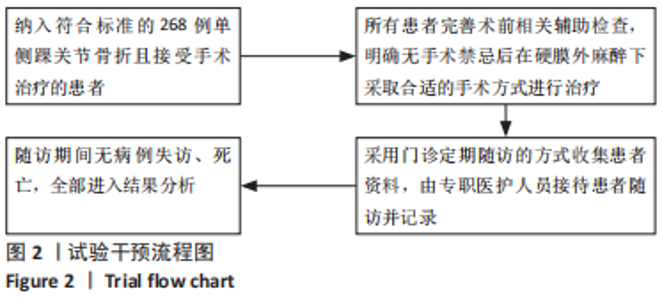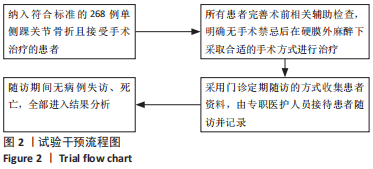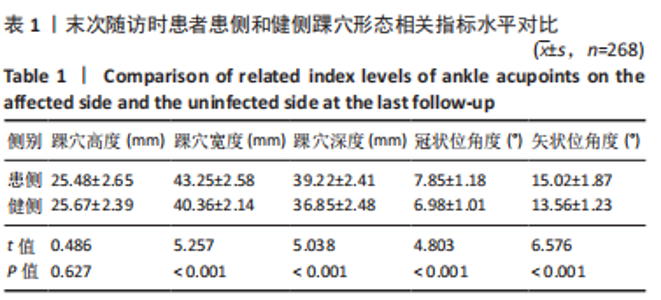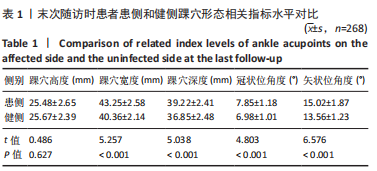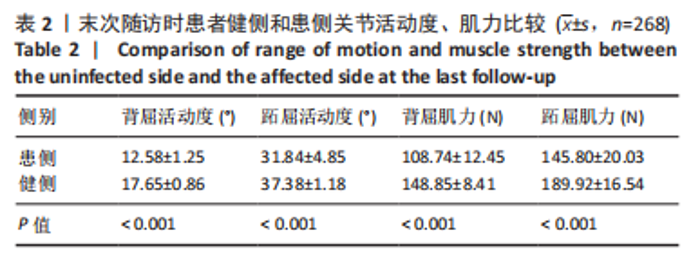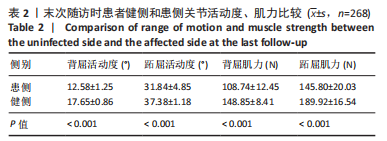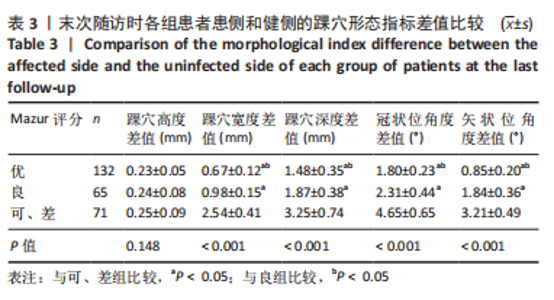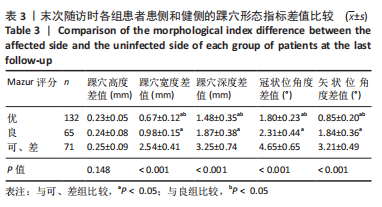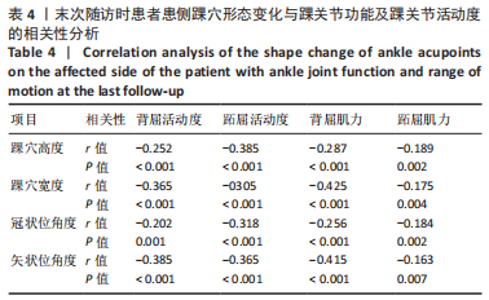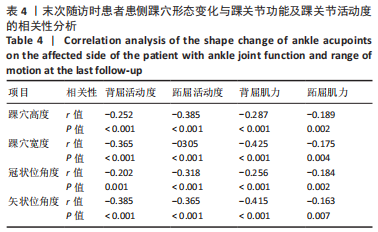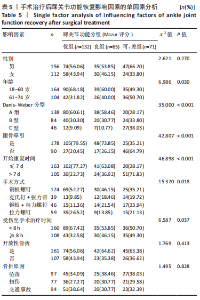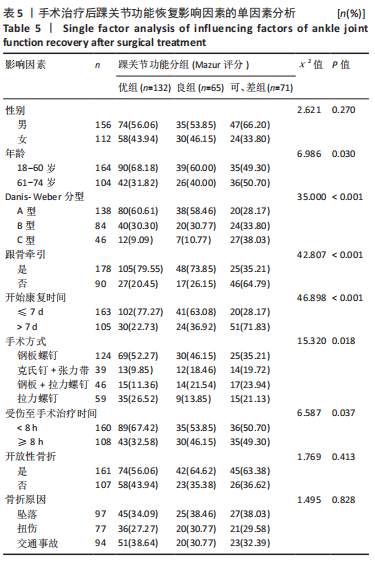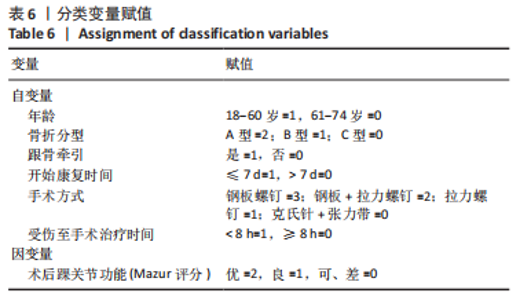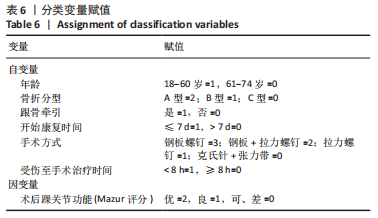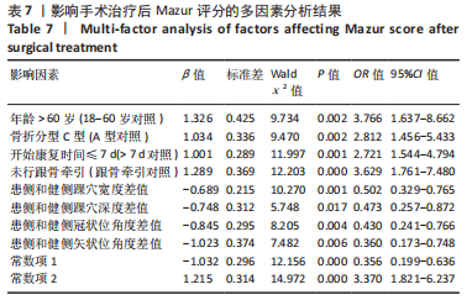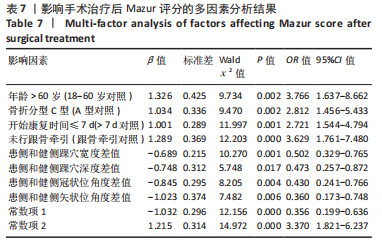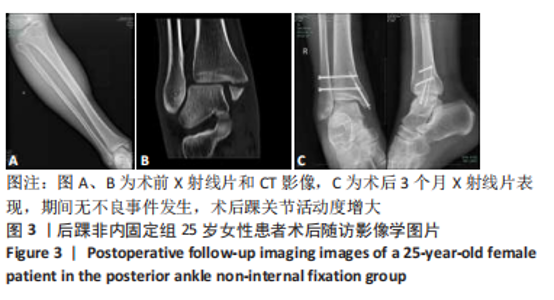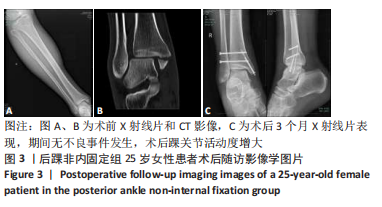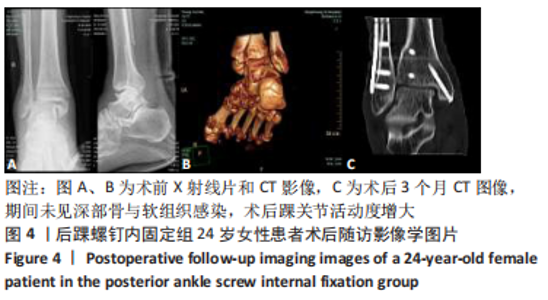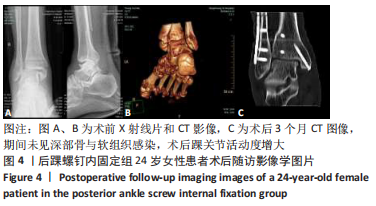[1] KITAMURA G, CHUNG CY, MOORE BE 2nd. Ankle fracture detection utilizing a convolutional neural network ensemble implemented with a small sample, de novo training, and multiview incorporation. J Digit Imaging. 2019;32(4): 672-677.
[2] SORT R, BRORSON S, GÖGENUR I, et al. Rebound pain following peripheral nerve block anaesthesia in acute ankle fracture surgery: an exploratory pilot study. Acta Anaesthesiol Scand. 2019;63(3):396-402.
[3] BINKLEY A, MEHLMAN CT, FREEH E, et al. Salter-harris II ankle fractures in children: does fracture pattern matter? J Orthop Trauma. 2019;33(5): e190-e195.
[4] 陈东亮,郑良孝,朱朝辉,等.骨折间隙直视下复位固定后踝移位骨折[J].中国矫形外科杂志,2020,28(2):87-91.
[5] 雷哲,赵亮亮.踝关节骨折手术治疗后影响踝关节功能的影响因素分析[J].安徽医学,2019,40(3):37-40.
[6] 焦晨,胡跃林,郭秦炜,等.不同方法修复踝关节外侧副韧带慢性损伤的稳定性评价[J].中国组织工程研究,2013,17(13):2358-2367.
[7] 李亚星,任毅,唐霞,等.特殊命名的踝关节骨折及其诊疗要点[J].中华骨科杂志,2019(21):1344-1356.
[8] 胡长青,连勇,范虓,等.胫骨平行定位法置入下胫腓螺钉治疗下胫腓联合分离的踝关节骨折[J].中华骨科杂志,2018,38(21):1293-1300.
[9] 倪纲,黄伟杰,滕跃,等.保守疗法与手术疗法治疗旋后外旋型踝关节骨折临床疗效比较[J].临床和实验医学杂志,2018,17(1):83-86.
[10] 张光明,阮志勇,丁声龙,等.Pilon变异的后踝骨折的形态分析和损伤机制的三维有限元分析[J].中华实验外科杂志,2018,35(11):2035-2038.
[11] YOU JH, KIM IH, HWANG J, et al. Fracture of ankle: MRI using opposed-phase imaging obtained from turbo spin-echo modified Dixon image shows improved sensitivity. Br J Radiol. 2018;91(1088):20170779.
[12] 朱祥萍,吉辉,雷德会.舒筋活血汤联合功能锻炼用于踝关节骨折术后功能恢复的临床疗效[J].中华中医药学刊,2018,36(7):1704-1706.
[13] FISCHER B, MASON LW. Reconstruction of severe ankle and pilon fracture malunions. Foot Ankle Clin. 2020;25(2):221-237.
[14] 顾文奇,徐宏威,王晓康,等.踝关节牵开成形联合富血小板血浆注射治疗创伤性踝关节炎[J].中华创伤骨科杂志,2019,21(4):321-327.
[15] 翟晓雪,潘钰,吴琼,等.踝关节智能牵伸训练对偏瘫患者踝关节生物力学特性及其运动功能和日常生活活动能力的影响[J].中华物理医学与康复杂志,2021,43(1):25-29.
[16] 杨绯,潘钰,吴琼,等.踝扭伤后关节生物力学和本体感觉变化特征及相关性[J].中国康复理论与实践,2019,25(12):1365-1369.
[17] 余黎,汪冰,谢哲,等.一期同时修复踝关节周围骨折合并Ⅲ度外侧韧带损伤[J].中华创伤骨科杂志,2019,21(7):581-585.
[18] 刘杰,宋才,梁西俊,等.踝关节骨折切开复位内固定术后患者踝关节功能影响因素分析[J].新乡医学院学报,2019,36(11):1044-1047.
[19] 高翔,张殿英,陈玉宏,等.根据损伤应力顺序复位固定治疗旋前外旋型踝关节骨折[J]. 中国矫形外科杂志,2019,27(2):186-189.
[20] 戚晓阳,邱旭升,施鸿飞,等.踝关节骨折术后关节功能的影响因素分析[J].中华创伤骨科杂志,2017,19(9):762-768.
[21] 廖明新,王岩,孙宁,等.踝关节骨折中后踝骨折的发生率及手术固定的相关因素分析[J].中华创伤骨科杂志,2019,21(7):575-580.
[22] 苏琰,李振东,薛剑锋,等.经腓骨截骨复位内固定治疗中老年累及后踝陈旧性踝关节骨折[J].中华创伤杂志,2020,36(4):315-320.
[23] LIAU GZ, PHUA SK, LI TP, et al. Reliability of ankle fracture classification by junior residents and medical students in simulated clinical settings. Anna Acad Med Singap. 2020;49(7):504-508.
[24] 赵宏谋,梁景棋,张言,等.修复与不修复踝关节骨折合并三角韧带断裂的比较研究[J]. 中华创伤骨科杂志,2019,21(4):290-295.
[25] OLCZAK J, EMILSON F, RAZAVIAN A, et al. Ankle fracture classification using deep learning: automating detailed AO Foundation/Orthopedic Trauma Association (AO/OTA) 2018 malleolar fracture identification reaches a high degree of correct classification. Acta Orthop. 2021(1):102-108.
[26] 叶伦,方宏洋,张文华,等.踝关节骨折CT表现特点与踝关节骨折分型的相关性分析[J].实用医院临床杂志,2019,16(4):98-100.
[27] HAN SM, WU TH, WEN JX, et al. Radiographic analysis of adult ankle fractures using combined Danis-Weber and Lauge-Hansen classification systems. Sci Rep. 2020;10(1):7655-7659.
[28] SEO H, LEE GJ, SHON HC, et al. Factors affecting compliance with weight-bearing restriction and the amount of weight-bearing in the elderly with femur or pelvic fractures. Ann Rehabil Med. 2020;44(2):109-116.
[29] ELGHAZY MA, HAGEMEIJER NC, WARYASZ GR, et al. Tibial stress fracture following ankle arthrodesis. Foot Ankle Int. 2020;41(5):556-561.
[30] 张明,徐俊华,张奕.外固定架辅助复位微创钢板内固定治疗移位跟骨骨折15例的临床疗效[J].重庆医学,2018,47(36):120-121.
[31] 高博,杨灵,汪红,等.跟骨牵引与外固定架临时固定分步延期治疗C型Pilon骨折的病例对照研究[J].中国骨伤,2020,33(3):203-208.
[32] 范智荣,彭嘉杰,钟的桂,等.切开复位内固定是否联合带线锚钉治疗踝关节骨折合并三角韧带损伤的Meta分析[J].中国组织工程研究, 2019,23(8):1307-1312.
[33] 马嘉,孟庆峰,郑连翔,等.踝前区弧形切口联合MIPO疗法对Pilon骨折患者术后踝穴形态及踝关节功能的影响[J].中国医药导报,2019, 16(3):73-76.
|
